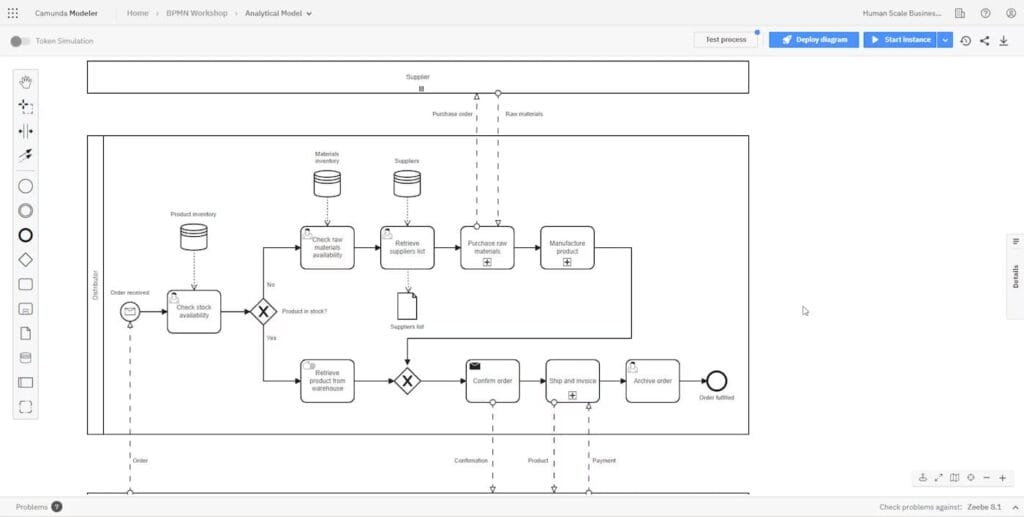Course Overview
This course introduces the BPMN visual language to create shareable, comprehensible representations of critical processes. It encompasses various aspects, such as
- process mapping
- the iterative nature of business process management
- the fundamentals of BPMN
- integrating Decision Model & Notation (DMN) with BPMN, and
- getting started with Camunda Modeler to create process maps
This self-paced course is designed to equip participants with the knowledge to apply BPMN effectively in their business operations.

An example of a BPMN process map
Business Process Management
Process mapping is an element of the larger domain of business process management. In this section, you’ll learn:
- A stepwise approach for creating appropriately detailed process models using decomposition and specialization
- How business process management requires iteration over time
- How to prioritize process improvement efforts
Process Modeling
In this section, you’ll learn about the process of…um…modeling processes. At a high level, business process management is an iterative, cyclical practice. So, too, is the science and art of describing processes with Business Process Model and Notation (BPMN) diagrams. We start with “an ugly first draft” and improve our understanding and description through the successive conversations and drafts until we’ve concluded that the model is of sufficient fidelity to be useful.
The BPMN Language
These lessons will help you jump-start the application of the BPMN visual language to your business processes. BPMN is simple enough to start developing shared understanding right away, but it’s powerful enough to describe complex processes.
Using DMN with BPMN
BPMN helps us visualize and document business processes. Through its graphical elements, BPMN sketches out activities, sequences, and events, providing a clear map for those looking to understand and refine business operations.
Yet, while BPMN outlines how processes flow, there’s another layer to consider: the decisions that drive these processes. This is where DMN comes into play. DMN offers a structured way to detail decisions, showcasing the logic, inputs, and outputs behind each choice. In essence, it fills in the gaps, giving depth to the ‘why’ behind certain steps in a BPMN diagram.
When you merge the capabilities of BPMN with DMN, you gain a more complete view of business operations that encompasses both process flow and decision rationale. For professionals already familiar with BPMN, adding DMN to your toolkit can offer richer insights and a more detailed understanding of business processes.
Camunda Quick Start
In this section, you’ll learn how to get up and running with the Camunda Modeler, so you can create your own process maps. The Camunda Modeler is free and easy to use. Because it’s built to the BPMN standard, it’s also very powerful.

The Camunda Modeler interface
BPM Resources
There is an overwhelming amount of information available on the topics of BPM and BPMN. This section contains a curated list of some of the best.


